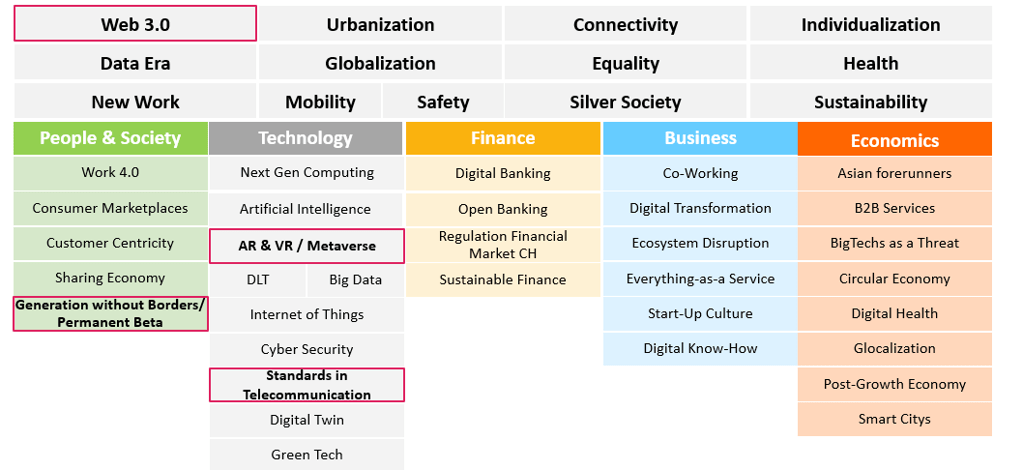Last Updated on 2 weeks by admin
Current Trends in Finance
Current Trends in Finance: The financial world is constantly evolving, driven by technological advancements, economic shifts, and changing consumer behaviors. Here are some of the most prominent trends shaping the current financial landscape.
Current Trends in Finance: Digital Transformation
Fintech: The rise of financial technology companies (fintech) is disrupting traditional financial institutions. These companies offer a wide range of services, including payments, lending, investing, and insurance, often with more accessible and user-friendly interfaces.
Blockchain: Blockchain technology is gaining traction in finance, enabling secure and transparent transactions. Its potential applications include cryptocurrency, smart contracts, and supply chain finance.
Open Banking: Open banking initiatives are promoting data sharing between financial institutions, allowing customers to have more control over their financial data and access innovative financial products.
Current Trends in Finance: Sustainable Finance
ESG Investing: Environmental, Social, and Governance (ESG) investing is becoming increasingly popular, as investors seek to align their investments with their values and contribute to a more sustainable future.
Green Bonds: These debt securities are issued to raise funds for environmental projects, such as renewable energy and sustainable infrastructure.

Climate Risk: Financial institutions are becoming more aware of the risks posed by climate change and are taking steps to integrate climate-related factors into their risk management processes.
Current Trends in Finance”: Central Bank Digital Currencies (CBDCs)
Digital Fiat: Many central banks are exploring the development of CBDCs, digital versions of their national currencies. These could potentially offer faster payments, greater financial inclusion, and enhanced monetary policy tools.
Artificial Intelligence (AI) and Machine Learning
Risk Management: AI and machine learning algorithms are being used to analyze vast amounts of data and identify potential risks in financial markets.
Fraud Detection: These technologies can help detect and prevent fraudulent activities, such as identity theft and money laundering.
Personalized Financial Advice: AI-powered chatbots and robo-advisors can provide personalized financial advice and investment recommendations.
Current Trends in Finance: Financial Inclusion
Mobile Banking: Mobile banking is expanding access to financial services, particularly in underserved regions.
Digital Payments: The adoption of digital payment methods is reducing the reliance on cash and promoting financial inclusion.
Microfinance: Microfinance institutions continue to play a crucial role in providing financial services to low-income individuals and small businesses.
Current Trends in Finance: A Snapshot of the Financial Landscape
The financial landscape in 2024/25 is marked by dynamic changes, driven by technological innovations, shifting economic conditions, and evolving consumer behaviors. Here’s a snapshot of the most significant trends shaping the world of finance today.
1. Digital Transformation and Fintech Growth
Digital transformation continues to be a dominant force in the financial sector. Fintech companies are leading this charge, offering innovative solutions that challenge traditional banking models. From mobile banking apps to blockchain-based platforms, these technologies are making financial services more accessible and efficient.
Notable Aspects:
- Blockchain and Cryptocurrencies: Blockchain technology is streamlining financial transactions, while cryptocurrencies remain a hot topic, with increasing regulatory scrutiny and institutional adoption.
- Digital Payments: The rise of digital payments is reshaping how consumers and businesses conduct transactions, with mobile wallets and contactless payments becoming the norm.
2. Sustainability and ESG Investing
Environmental, Social, and Governance (ESG) criteria are playing an increasingly important role in investment decisions. Investors are prioritizing companies that demonstrate strong ESG performance, reflecting a broader societal shift towards sustainability and ethical business practices.
Notable Aspects:
- Green Bonds and Sustainable Finance: The issuance of green bonds is on the rise, funding projects that combat climate change and promote sustainable development.
- Corporate Responsibility: Companies are under pressure to improve their ESG metrics, not only to attract investment but also to align with consumer and regulatory expectations.
3. Economic Uncertainty and Market Volatility
The global economy is experiencing significant uncertainty, driven by factors such as high inflation, geopolitical tensions, and changing trade dynamics. This uncertainty is contributing to market volatility, with investors adopting more cautious and diversified strategies.
Notable Aspects:
- Inflation and Interest Rates: Central banks are maintaining higher interest rates to combat inflation, impacting borrowing costs and investment strategies.
- Geopolitical Risks: Conflicts and trade tensions are disrupting global supply chains, influencing commodity prices, and creating unpredictable market conditions.
4. Technological Innovation and Automation
Technology is not only transforming financial products and services but also how financial institutions operate. Automation and artificial intelligence (AI) are being increasingly integrated into processes ranging from customer service to risk management.
Notable Aspects:
- AI in Finance: AI-driven tools are enhancing decision-making, enabling more personalized financial services, and improving operational efficiency.
- Robo-Advisors: Automated investment platforms are gaining popularity, offering low-cost, data-driven financial advice to a broader audience.
5. Shifts in Consumer Behavior
Consumer behavior is evolving rapidly, influenced by digitalization and the aftermath of the COVID-19 pandemic. This shift is impacting various sectors, from retail to real estate, and is prompting financial institutions to adapt their offerings.
Notable Aspects:
- Digital Banking: The preference for online and mobile banking services continues to grow, pushing traditional banks to innovate and expand their digital footprints.
- Debt and Savings Trends: Varying levels of consumer debt and savings are shaping economic recovery, with some regions experiencing robust consumer spending, while others face challenges.
6. Labor Market Pressures
The labor market is undergoing significant changes, with talent shortages in key industries driving wage growth and influencing corporate strategies. Companies are increasingly focused on attracting and retaining talent, particularly in tech and specialized fields.
Notable Aspects:
- Remote Work: The shift to remote work is becoming a permanent feature in many industries, affecting everything from real estate demand to employee expectations.
- Wage Inflation: Talent shortages are leading to higher wages, particularly in tech and finance, contributing to overall inflationary pressures.

Leave a Reply